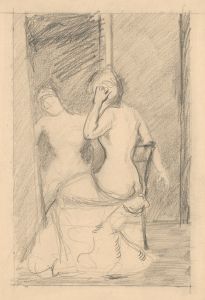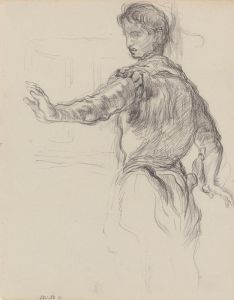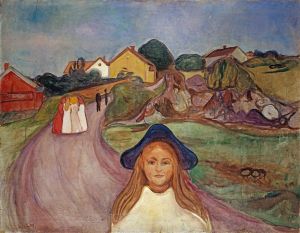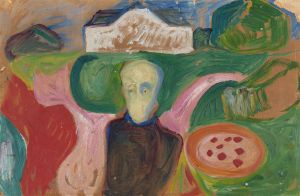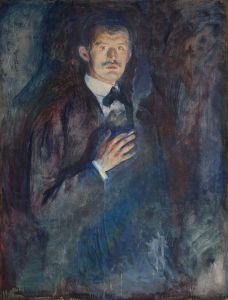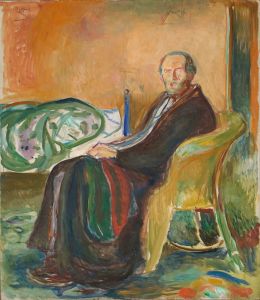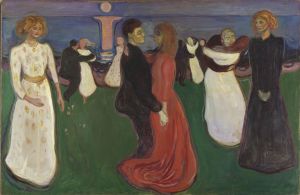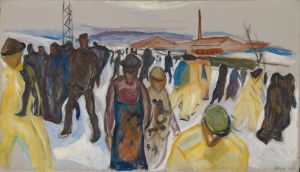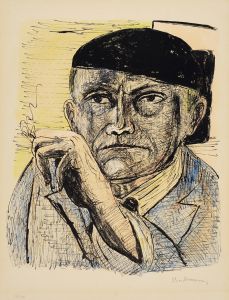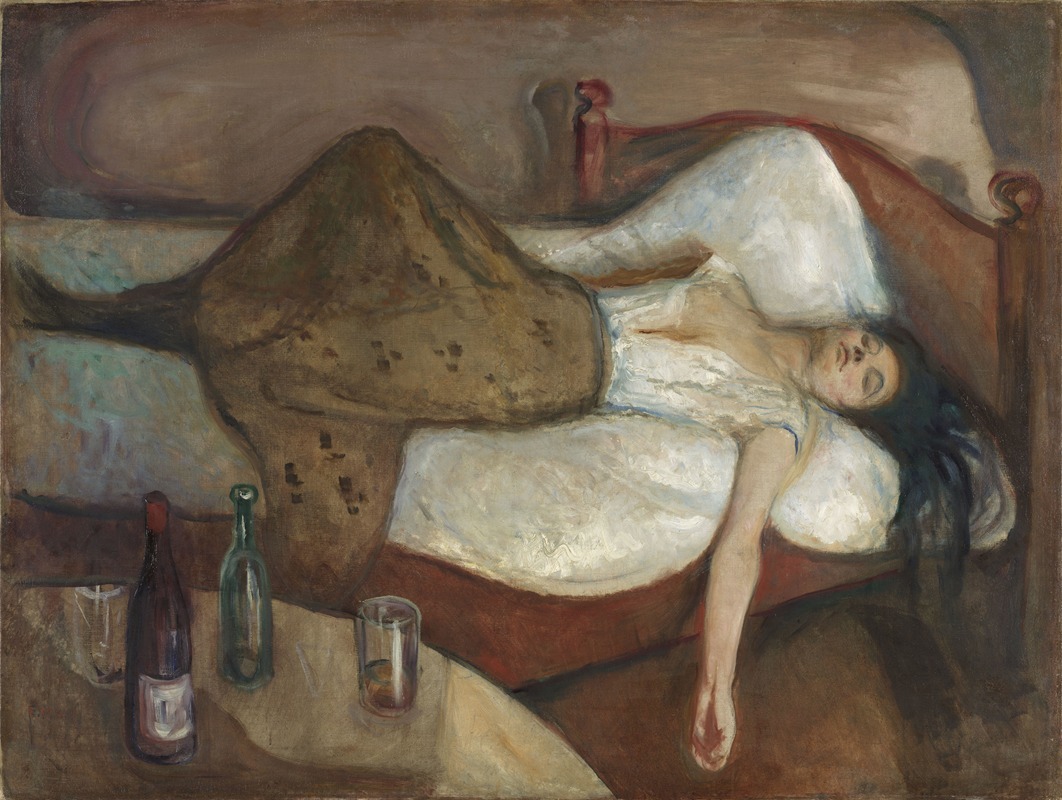
The Day After
A hand-painted replica of Edvard Munch’s masterpiece The Day After, meticulously crafted by professional artists to capture the true essence of the original. Each piece is created with museum-quality canvas and rare mineral pigments, carefully painted by experienced artists with delicate brushstrokes and rich, layered colors to perfectly recreate the texture of the original artwork. Unlike machine-printed reproductions, this hand-painted version brings the painting to life, infused with the artist’s emotions and skill in every stroke. Whether for personal collection or home decoration, it instantly elevates the artistic atmosphere of any space.
Edvard Munch's painting The Day After (Dagen derpå) is a work created in 1894, during a period when the artist was exploring themes of human emotion, existential anxiety, and the complexities of modern life. The painting depicts a woman lying on a bed in a disheveled state, her body partially covered by a white sheet. The scene suggests the aftermath of a night of drinking or revelry, as indicated by the presence of a wine bottle and glass on the bedside table. The woman's posture and expression convey a sense of vulnerability and exhaustion, characteristic of Munch's ability to capture raw human emotion.
This painting is part of Munch's broader exploration of psychological and emotional states, which he often expressed through his use of bold colors, dramatic compositions, and symbolic imagery. The work reflects his interest in themes such as love, desire, and the consequences of indulgence, which were recurring motifs throughout his career. The intimate and somewhat somber atmosphere of The Day After aligns with Munch's broader artistic focus on the darker aspects of human experience.
Munch was heavily influenced by Symbolism and the emerging Expressionist movement, and his works often sought to convey inner emotional truths rather than realistic depictions of the external world. The Day After exemplifies this approach, as the painting's mood and composition prioritize emotional resonance over detailed realism. The loose brushwork and muted color palette contribute to the overall sense of melancholy and introspection.
The painting is notable for its ability to evoke a narrative without explicitly stating it, leaving viewers to interpret the scene and its implications. This open-ended quality is a hallmark of Munch's work, as he often sought to engage the viewer's imagination and emotions.
The Day After is one of many works by Munch that delve into the complexities of human relationships and the psychological impact of modern life. It is part of his broader body of work that includes iconic pieces such as The Scream and Madonna, which similarly explore themes of existential angst and the human condition. Today, Munch is regarded as a pioneer of modern art, and his works continue to be celebrated for their emotional depth and innovative approach to visual storytelling.






